If God ever granted me three wishes, one of them I would have definitely asked for was a time machine. I simply love going back in history because there is so much to learn. What was our past like? How did our world evolve into what we know today? What were the actual circumstances behind various historical events? There are so many mysteries and unanswered questions across millions of years of evolution.
Would I like to meet Leonardo da Vinci? Absolutely! Could I witness the construction process of the pyramids? Yes. Would I like to know where the lost tomb of Alexander the Great is? Of course. Would I like to see the Chicxulub impact event that wiped out the dinosaurs? Well, yes, but nothing should happen to me. Furthermore, there is an abundance of knowledge and exploration available from various historical periods and eras, such as Sparta, Babylon, Roman civilization, Napoleon, Shakespeare, the Nazca Lines, Angkor Wat, Pompeii, Indus Valley civilization, the Ark of the Covenant, World War I and II, the Great Library of Alexandria, and the list goes on. This is how we feel when we dive deep into history. We become curious, and museums are the closest resources we have, acting as a gateway to our past and providing us with a glimpse of our planet’s journey through the ripples of time.
Museums are cultural heritage sites that provide us with access to breathtaking exhibitions and meticulously portrayed collections. Sculptures, paintings, antiquities, and even long-lost riches are only the tip of the iceberg when it comes to what museums have to offer. Museums gather, maintain, examine, reassemble, share, and present artifacts of cultural, historical, traditional, and scientific significance, serving as a treasure trove of information and a fountain of knowledge. They allow us to see how our world has changed through the ebb and flow of history. I’ll now share the top 15 must-see museums for your next trip.
![]() Tips On How To Start Saving For The Future
Tips On How To Start Saving For The Future
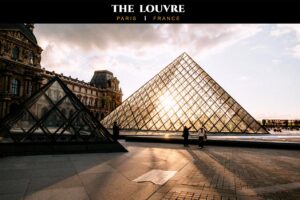
The Louvre is a renowned art museum located in Paris, France. It houses a collection of significant Western artworks, such as Leonardo da Vinci’s Mona Lisa, Antonio Canova’s Psyche Revived by Cupid’s Kiss, and Michelangelo’s Dying Slave. Other notable pieces include Fame riding Pegasus by Antoine Coysevox, Venus de Milo by Alexandros of Antioch, The Raft of the Medusa by Théodore Géricault, The Great Sphinx of Tanis discovered in the ruins of the Temple of Amun-Ra, The Coronation of Napoleon by Jacques-Louis David, The Wedding Feast at Cana by Paolo Veronese, and The Winged Victory of Samothrace. Philip II initiated the building’s construction in the late 12th century. The crypt retains traces of the Medieval Louvre, and throughout its history, the museum has undergone multiple renovations and expansions to become the present-day Louvre Palace.
The Louvre was transformed into a public museum during the French Revolution and was officially inaugurated on August 10, 1793. It featured an exhibition of 537 paintings and 184 art objects. The collection expanded under the leadership of Napoleon, Louis XVIII, and Charles X, with an additional 20,000 items added during the Second French Empire. Eight different curatorial divisions divide the collection, including Roman, Near Eastern, and Egyptian antiquities, as well as Etruscan, Greek, and Islamic art, along with paintings, sculptures, drawings, and decorative arts. The Louvre contains around 500,000 objects and displays 35,000 works of art across eight curatorial departments, covering an area of 782,910 sq. ft. The Louvre receives an impressive number of visitors each year, making it the most-visited museum globally.
The museum is conveniently accessible via the Louvre-Rivoli and Palais Royal-Musée du Louvre metro stations. The museum’s operating hours are 9:00 a.m. to 6:00 p.m. on Monday, Thursday, Saturday, and Sunday. The operating hours are from 9:00 a.m. to 9:00 p.m. on Wednesdays and Fridays. The establishment is not open on Tuesdays. The Louvre is not open on January 1, May 1, and December 25, but remains operational on all public holidays, except for Tuesdays. The admission fee for the Louvre is €22. Admission is complimentary for individuals under the age of 18, under the age of 26, and residents of the European Economic Area (EEA). To access more information, please refer to the provided links below.
To visit the official website, click here.
To see the full list of visitors eligible for free admission, click here.
To see the digital collection, click here.
For a 360×180-degree panorama virtual tour, click here.
For a virtual tour of the museum’s rooms, galleries, and palace architecture, click here.
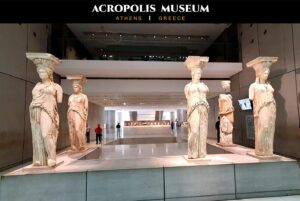
The Acropolis Museum is a renowned archaeological museum in Athens, Greece. It is situated on the southeastern slope of the historic Acropolis Hill, an area with a rich history dating back to prehistoric times. The museum’s primary focus is on the archaeological discoveries from the Acropolis of Athens, a historic stronghold that represents the pinnacle of classical Greek civilization. The city boasts renowned landmarks like the Parthenon and the Temple of Athena Nike, showcasing the remarkable architectural and cultural accomplishments of ancient Greece.
The Acropolis Museum’s notable features include the Caryatids of Erechtheion, Parthenon marble sculptures, a portrait of Emperor Augustus, a bust of Tiberius Julius Sauromates II, a statue of Athena, a statue of the Persian or Scythian Rider, and the head of a statue of Alexander the Great, among other artifacts.
Established in 2003, the museum opened to the public on June 20, 2009. The museum showcases over 4,250 objects in a vast 14,000-square-meter space spread across three levels. It presents the discoveries from the slopes of the Acropolis, including artifacts and sculptures from significant structures such as the Erechtheion, the Temple of Athena Nike, and the Propylaea.
The Acropolis Museum is conveniently accessible via multiple modes of public transportation, including the metro, bus, tram, and trolleybus. The most efficient methods for bypassing urban congestion are the metro and trolleybus systems, which can transport you to Syntagma Square in a mere 8 minutes. The closest metro stop is Acropoli metro station, while the nearest trolleybus stop is Makrygiannē, Gargaretta. The cost of a single ticket in the general admission category is 15€. However, please note that prices may vary depending on the schedule. At the museum’s ticket desk, you can only obtain free admission and discounted prices.
To visit the official website, click here.
To book online tickets for the Acropolis Museum, click here.
For an online exploration of The Frieze of the Parthenon, click here.
For additional information on opening hours, ticket prices, tours, and getting to the museum, click here.
![]() 30 Essentials For The Complete Man
30 Essentials For The Complete Man
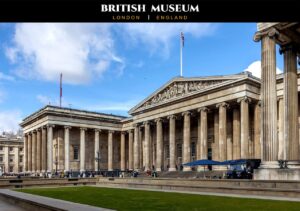
Situated in London, England, the British Museum chronicles the history of human civilization through its artifacts and cultural displays, which span from prehistoric times to the present day. Built on June 7, 1753, it was first accessible to the general public in 1759. Sir Hans Sloane’s initial goal was to establish the museum as a universal museum, showcasing his extensive collection of 71,000 artifacts. As a result of his long-standing concern for the safety of his collection, he paid £20,000 to King George II in exchange for 40,000 printed volumes, 7,000 manuscripts, vast collections of natural history specimens, and artifacts from Sudan, Egypt, Greece, and Rome.
After 250 years of development, the museum now boasts 94 galleries showcasing 8 million artifacts over 807,000 square feet of space. In 2023, the museum was the most visited tourist attraction in Britain, with approximately 6 million visitors, a 42% increase from 2022. The museum’s website had 27 million views, and its online database had nearly 4.5 million unique object entries. The British Museum has filmed movies such as The Mummy Returns (2001), Night at the Museum: Secret of the Tomb (2014), Doctor Strange in the Multiverse of Madness (2022), and many others.
The British Museum is a comprehensive repository of knowledge, housing a vast collection of artifacts and masterpieces from various eras and periods, including the Stone Age, Bronze Age, and Iron Age, spanning from 3.4 million years BC to the 1st century AD. Some notable collections include the surviving manuscript of Beowulf, original casing stones from the Great Pyramid of Giza, a colossal head from a statue of Amenhotep III, the Parthenon Marbles, a head from the statue of Nemesis, Assyrian palace reliefs from the city of Nimrud and Nineveh, the Babylonian Chronicles, and prints and drawings by Michelangelo, Rembrandt, Leonardo da Vinci, Claude and Watteau, Peter Paul Rubens, Raphael, and complete collections of the works by Dürer and Goya.
The museum also houses a sizeable collection of Asian relics, including items unearthed from the sites of Mohenjo-daro and Harappa in the Indus Valley. These artifacts date back to the time period of ancient India, which was between 2500 and 2000 BC. Notable pieces include a sandstone fragment of a Pillar of Ashoka with a Brahmi inscription, as well as Chinese antiquities and paintings spanning from the Tang to the Qing dynasties. In addition, the collection features works of art from Japan that date back to the early 20th century, as well as ceramic vessels from the ancient ruins of Ban Chiang, Thailand, and the renowned Sambas Treasure, which is comprised of Buddhist figurines made of gold and silver from West Borneo, Indonesia. There are also a number of noteworthy artifacts on display, including a bronze figure of a seated Buddha from Bagan, Burma, as well as a Champa figure made of sandstone depicting a lion. Both of these figures are from Vietnam.
The museum’s permanent collection is free to view, but we recommend reserving a complimentary ticket in advance. The museum is open daily from 10 a.m. to 5 p.m., with extended hours until 8:30 p.m. on Fridays. The museum will remain closed from December 24th to December 26th. To find additional details regarding tickets, transportation, operating hours, exhibitions, amenities, accommodations for disabled visitors, and dining options, kindly refer to the provided links below.
To visit the official website, click here.
For more information on planning your visit, click here.
To book a free ticket in advance, click here.
For a virtual tour of the museum, click here.
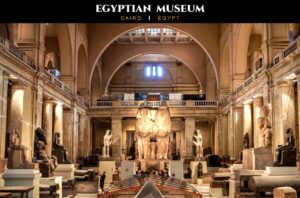
Cairo, Egypt, is home to the Egyptian Museum, also known as the Cairo Museum. It is home to a vast collection of over 120,000 Egyptian antiquities, spanning more than 5000 years of ancient Egyptian history. It boasts the distinction of having the world’s largest collection of such artifacts.
Established on October 18, 1863, as the Boulaq Museum, it quickly exceeded its capacity to accommodate the increasing number of artifacts added to the collection. The devastating floods that occurred in 1878 caused significant harm to the museum, and future flooding risks necessitated the museum’s relocation to a safer location. A newly constructed museum showcased its first artifacts on May 7, 1900. It spanned 15,000 square meters and cost approximately 240,000 Egyptian pounds at the time. On November 15, 1902, the Egyptian Museum officially opened. French architect Marcel Dourgnon designed it in a Neo-Classical style. This museum holds the distinction of being the largest in Africa and the first national museum in the Middle East.
The museum consists of two primary floors: the ground floor and the first floor. The ground floor houses a wide range of artifacts from the New Kingdom, spanning from 1550 to 1069 BC. Notable exhibits include the Coffin of Akhenaten, the Colossal Statue of Ramses II, and four fragments of Queen Hatshepsut’s expedition to the land of Punt, among numerous others. The artifacts on the first floor showcase the rich history of Egypt’s final two dynasties. Visitors can explore items from the tombs of notable pharaohs such as Thutmosis III, Thutmosis IV, Amenophis II, and the courtier Maiherpri.
Additionally, the collection includes numerous artifacts from the Valley of the Kings, including the well-preserved tombs of Tutankhamun and Psusennes I. Additionally, there is a vast assortment of papyri, coins, textiles, and wooden sarcophagi on display. Notable masterpieces in ancient Egyptian art include The Gold Mask and the ceremonial throne of Tutankhamun; the Colossal Statue of Amenhotep III and Tiye; the Book of the Dead for the Priest of Bastet; the Statue of Osiris, the god of the afterlife; the Statue of Ramses III between Horus and Seth; the Sarcophagus of Queen Hatshepsut; the Sphinx of Amenemhat III; and the Unfinished Head of Nefertiti, among others.
The Egyptian Museum is open daily from 9:00 a.m. to 5:00 p.m. The operating hours for the ticket office are from 8:30 a.m. to 4:00 p.m. The entry fee for Egyptian and Arab citizens is 30 Egyptian pounds for adults, while for other nationalities it is 450 Egyptian pounds. You can conveniently reach the museum by train, bus, or taxi from Tahrir Square. The museum is known as “Almathaf Almasri fil Tahrir” in Egyptian Arabic. To find additional details, please click on the link below.
To visit the official website, click here.
For more information on visiting guidelines, click here.
For more information on visiting the museum library, click here.
To view the collections online, click here.
![]() How To Prepare For A Road Trip
How To Prepare For A Road Trip
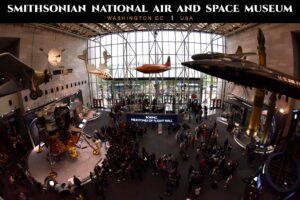
Originally founded as the National Air Museum in 1946, the Smithsonian National Air and Space Museum is located in Washington, D.C., United States. The museum has two locations, with the second one situated in Chantilly, Virginia. The aviation museum serves as a hub for scholarly exploration and in-depth research in aviation and spaceflight history, astronomy, terrestrial geology, and geophysics.
This institution’s collection includes notable artifacts such as the 1903 Wright Flyer, the Apollo 11 Command Module Columbia, the Voyager Spacecraft, the model of the LZ 129 Hindenburg, the Gemini VII Capsule, the Surveyor Lunar Lander, the Ranger Spacecraft, the Marie Curie Rover or Mars Pathfinder, the Bell X-1 aircraft, and the Mercury Friendship 7 spacecraft, among others.
The museum is currently undergoing major renovations. Currently, 8 out of the museum’s 23 galleries are open to the public, with the remaining galleries expected to be accessible in 2026. The museum is open daily from 10:00 a.m. to 5:30 p.m., with the exception of December 25. Metrorail and metrobuses serve as transportation options, with the nearest metrorail stop being L’Enfant Plaza. In addition to its exhibits, the museum offers a planetarium and a spacious Airbus IMAX theater. Every individual, regardless of their age, is required to possess a pass in order to gain entry into the museum. These passes are made available at six-week intervals. For additional details on events, exhibitions, group tours, field trips, and obtaining free timed entry passes, please click the links below.
To visit the official website, click here.
For more information during your visit, click here.
To reserve free passes, click here.
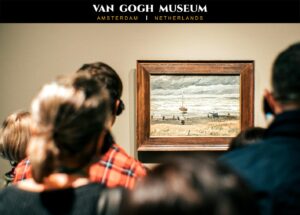
The Van Gogh Museum is a renowned Dutch art museum that focuses exclusively on Vincent van Gogh’s masterpieces. On June 2, 1973, the museum opened its doors in Amsterdam, Netherlands. The museum houses an extensive collection of Van Gogh’s artwork, including 200 paintings, 400 drawings, and 700 letters. The museum showcases paintings by renowned artists such as Kees van Dongen, Odilon Redon, Paul Signac, and Maurice Denis, alongside sculptures by Auguste Rodin and Jules Dalou, among others. The museum showcases significant artworks spanning a range of subjects from 19th-century art history. The museum in 2023 saw a remarkable 1.7 million visitors, solidifying its status as the most frequented museum in the Netherlands.
Some of Vincent van Gogh’s masterpieces in the museum’s permanent exhibition are The Potato Eaters, Wheatfield with a Reaper, The Yellow House, The Bedroom, The Starry Night, Wheatfield under Thunderclouds, The Jetty of Boulogne-sur-Mer, The Old Church Tower at Nuenen (‘The Peasants’ Churchyard’), The Hill of Montmartre with Stone Quarry, The Cottage, Self-Portrait with Pipe, The Old Officers, and many more.
Online purchases are the only available method for acquiring tickets. The ticket prices are €22 per person, and children under 18 years old can enter for free. For additional information and more details regarding accessibility, opening hours, audio tour, and directions, please refer to the provided links below.
To visit the official website, click here.
To see what artworks are on view, click here.
To book tickets online, click here.
For more details on the address, and the opening hours, click here.
For a virtual tour of the Van Gogh Museum, click here.
![]() Embracing The Wild: How A Forest Escape Can Reset Your Mind
Embracing The Wild: How A Forest Escape Can Reset Your Mind
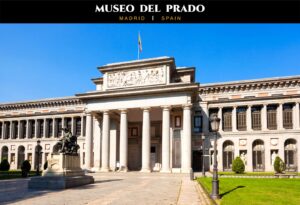
The Museo del Prado, or Prado Museum, is Spain’s primary national art museum. It is situated in Madrid, Spain. Founded on November 19, 1819, this museum originally focused on paintings and sculpture. It is known for housing the finest collection of Spanish art, including notable works by renowned artists such as Francisco Goya, Doménikos Theotokópoulos, and Diego Velázquez. The museum houses a wide range of art and historic documents, including works from the Spanish royal collection and European art collections spanning several centuries. The collection includes approximately 8,200 drawings, 7,600 paintings, 4,800 prints, and 1,000 sculptures. Additionally, around 3,100 works are currently on temporary loan to various museums and official institutions.
Some of the most notable works featured in the museum are The Apparition of the Virgin to Saint Bernard by Bartolomé Esteban Murillo, The Annunciation by Robert Campin, The Descent from the Cross by Juan Correa de Vivar, The Assumption of Mary Magdalene by José Claudio Antolinez, Adam and Eve reprimanded for their Sin by Francisco Bayeu, The Birth of the Sun and the Triumph of Bacchus by Corrado Giaquinto, The Judgement of Paris by Peter Paul Rubens, Christ Carrying the Cross by Titian, Hercules and the Cretan Bull by Francisco de Zurbarán, The Holy Family by Vincenzo Carducci, The Washing of the Feet by Tintoretto, and The Adoration of the Shepherds by Luis de Morales, among many others.
The cost of general admission is 15€. Free admission is available for individuals under 18 years old. Admission to the museum grants access to both the collection and the temporary exhibitions. Tickets for individuals aged 65 and above are available at a reduced rate of 7.50€. To qualify for free or reduced admission, present proof of recognition at the ticket office on the day of your visit. The proof must be official, valid, and up-to-date. The museum’s operating hours are Monday to Saturday, 10 a.m.–8 p.m., and on Sundays and holidays, it closes at 7 p.m. The museum remains closed on January 1st, May 1st, and December 25th. For additional details, please consult the provided links.
To visit the official website, click here.
To explore the collection of works online, click here.
For a virtual tour of the museum, click here.
For more information on opening hours and ticket prices, click here.
For additional resources to plan your visit, click here.
For more details on transportation and directions, click here.
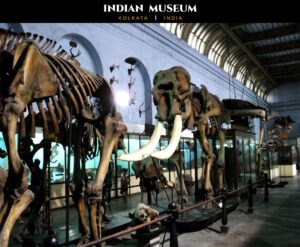
Nathaniel Wallich, a Danish botanist, founded the Indian Museum on February 2, 1814, in Kolkata, India. It was originally known as the “Asiatic Society Museum” and later renamed the “Imperial Museum.” The items then included his personal collections, as well as those of the Asiatic Society of Bengal in Kolkata (Calcutta). The museum is one of the oldest in the world, and it holds the distinction of being the largest museum in the Asia-Pacific region. Its collection currently consists of 2.5 million items. Six sections divide the museum, each containing a variety of cultural and scientific artifacts. Visitors can explore thirty-five galleries filled with antiques, armor, ornaments, fossils, skeletons, mummies, and a collection of Persian, Mughal, Deccan, and Rajasthani paintings.
Notable exhibits at the museum include a stone imprint of Buddha’s foot, a silver coin from the time of Alexander the Great, a unicorn seal from the Indus Valley, the earliest plant fossil from Gondwana land, a dinosaur egg, the Mathura Herakles, and an Invertebrate Fossil Gallery featuring stromatolite, the earliest known record of life in India dating back 3200 million years. The museum also displays the red sandstone remnants of the Bharhut Stupa and other architectural remains that depict the Jātaka, which is a collection of literature that portrays stories from the life of Lord Buddha. The railings and torans of the stupas depict these stories using Brahmi characters.
The admission fee for adults is ₹75, while children under 18 are charged ₹20. Children under 5 can enter for free. The fee for non-Indian citizens is ₹500. The museum is open from 10 a.m. to 6 p.m., Tuesday through Sunday. The galleries of the Indian Museum Kolkata are closed every Monday and on public holidays, including Republic Day (January 26th), Independence Day (August 15th), Mahatma Gandhiji’s Birthday (October 2nd), Holi Festival, Dusshera, Diwali, and Id-ul-Fitr. You can conveniently reach the museum via various transportation options, such as bus, taxi, and metro. The closest metro station to the museum is Park Street, which is conveniently located just a short 6-minute walk away. For further details, please refer to the links provided below.
To visit the official website, click here.
To book tickets online, click here.
For more details regarding your visit, click here.
For a virtual tour of the museum, click here.
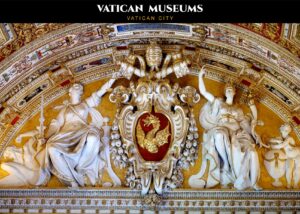
In 1506, Pope Julius II established the Vatican Museums, which serve as the public museums of Vatican City. The museums boast a vast assortment of Roman sculptures, paintings, frescoes, artifacts, and significant masterpieces of Renaissance art acquired by the Catholic Church over the years. The museum houses a total of 24 galleries, showcasing approximately 70,000 works of art, with 20,000 pieces currently exhibited. The visitor route through the Vatican Museums includes the Sistine Chapel, adorned by Michelangelo, and the Stanze di Raffaello, decorated by Raphael. The Vatican Museums received 6.8 million visitors in 2023, placing them second on the list of the world’s most-visited art museums, just behind the Louvre.
Notable works in the collection include Laocoön and His Sons, The Face of Julius Caesar, The Creation of Adam, The Entombment of Christ, the Hall of Constantine, Heracles with Infant Telephos, Room of the Segnatura, Inscription of Abercius, Room of the Immaculate Conception, Travelling carriage of Ferdinand II, Chapel of St. Peter Martyr, Borgia Apartment, The Transfiguration, and Sistine Chapel, among others.
The museum is open Monday through Saturday from 8:00 a.m. to 7:00 p.m. The Vatican Museum remains closed on Sundays, except for the free public visit on the last Sunday of each month. If you plan to visit the Vatican Museums on the last Sunday, anticipate potentially long wait times. It is advisable to check the prices, reductions, and details on special free entry for the various types of tickets available. Refunds are not available. The entry ticket for the Vatican Museums grants access to the museums and Sistine Chapel only on the day it is issued. For additional details, please consult the provided links.
To visit the official website, click here.
For more details on the different ticket prices, click here.
For more information on the opening and closing schedules, click here.
For a 360-degree virtual tour, click here.
For more useful information for visitors, click here.
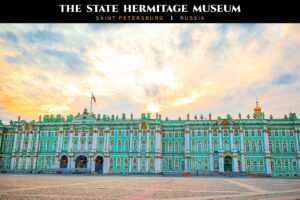
The State Hermitage Museum is a renowned art and culture museum located in the beautiful city of Saint Petersburg, Russia. The institution was established in 1764 under the patronage of Catherine the Great. The empress began her art collection by acquiring paintings from the Berlin merchant Johann Ernst Gotzkowsky. Gotzkowsky’s extensive collection featured works by renowned artists such as Rubens, Anthony van Dyck, Frans Hals, Rembrandt, Titian, Raphael, and more. Over time, Catherine acquired numerous paintings by Brühl and Crozat. Currently, the museum boasts a collection of approximately 3 million items, which are housed in various historic buildings within the main museum complex. These buildings include the Winter Palace, the Hermitage Theatre, the Small Hermitage, the New Hermitage, and the Old Hermitage.
Some of the major highlights are Danaë by Titian, Cupid Burning Armor by Elisabetta Sirani, Repentant Mary Magdalene by Francesco Furini, The Bashkirs Escorting Prisoners by Sir William Allan, Marriage at Cana by Johann Heinrich Schönfeld, The Return of the Prodigal Son by Johann Carl Loth, Christ’s Entry into Jerusalem by Albrecht Dürer, Hercules at the Crossroads between Virtue and Vice by Pompeo Batoni, and numerous other works of art from Spain, England, the Middle East, France, Italy, and Russia. The museum also displays prehistoric art and Egyptian antiquities.
The main museum complex is open from 11 a.m. to 6 p.m. on Wednesday, Thursday, and Sunday, and from 11 a.m. to 8 p.m. on Tuesday, Friday, and Saturday. The museum is not open on Mondays, January 1st, and May 9th. The ticket prices for the main museum complex are subject to variations based on the day and nature of the visit. The standard price is 1200 Rubles. For further information, please refer to the links provided below.
To visit the official website, click here.
To buy tickets online, click here.
For a 360-degree virtual tour, click here.
![]() Things I Wish I Had Done Earlier
Things I Wish I Had Done Earlier
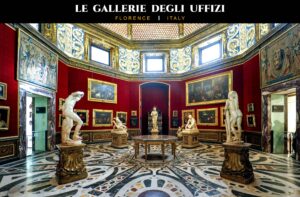
The Uffizi Gallery, founded in 1581, is a renowned art museum situated in Florence, Italy. The museum is highly popular among visitors and contains a remarkable collection of western art, featuring exceptional architectural masterpieces spanning from the 16th to the 19th centuries across an expansive area of 139,000 square feet. A wide range of valuable artifacts, including paintings, books, jewelry, and other archaeological masterpieces featuring ancient Greek and Roman sculptures primarily from the Italian Renaissance, adorn the Uffizi. In 1769, the gallery opened to the public, and in 1865, it officially became a museum.
The Uffizi Gallery is a paradise of wonders for travel enthusiasts, and its collections include Madonna and Child Enthroned with Angels by Taddeo Gaddi, St. Jerome in the Desert by Giovanni Bellini, Portrait of Lucius Aelius, Judith Beheading Holofernes by Artemisia Gentileschi, David with the Head of Goliath by Guido Reni, Front of the Sarcophagus depicting the Labours of Hercules, Portrait of Homer, Medici Vase, Liberation of St. Peter from Prison by Francesco Albani, Perseus frees Andromeda by Piero di Cosimo, Statue with Silenus and young Bacchus, and many more.
Many of the city’s notable landmarks are in close proximity to the Uffizi Gallery. The nearest point of reference is Palazzo Vecchio. The train station nearest to the Uffizi Gallery is Santa Maria Novella, which is approximately 1.4 kilometers away. Efficient modes of transportation, such as the bus and taxi, are easily accessible. It will take approximately 20 minutes to reach the Uffizi Gallery on foot, allowing you to explore nearby cultural landmarks along the way.
During the high season, admission to the Uffizi costs 25€. This period includes January 1–9, February 21–9, November 21, and December 21–31. The Uffizi Gallery is open from Tuesday to Sunday, with operating hours from 8:15 a.m. to 6:50 p.m. It is closed on Mondays, as well as on January 1st and December 25th. On the first Sunday of each month, the museum maintains its regular opening hours and offers free admission to all visitors. To find out more about the official ticket fares, discounts, special tours, and free admission to the Uffizi Galleries, please refer to the links provided below.
To visit the official website, click here.
To book tickets online, click here.
For special instructions on visiting, click here.
For more information on the seasonal ticket prices for the Uffizi, Palazzo Pitti and the Boboli Gardens, click here.
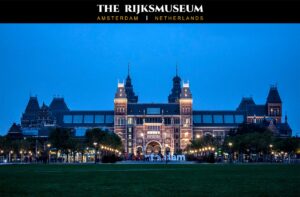
Approximately 220 years ago, on November 19, 1798, the idea of creating a national museum was conceived. The purpose was to foster a sense of patriotism and serve as an exhibit space for the display of paintings, sculptures, and historical artifacts. This National Art Gallery was founded on May 31, 1800, in The Hague. However, in 1813, its collection was relocated to Trippenhuis, a 17th-century city palace. This palace was subsequently renamed the ‘Rijks Museum’, or ‘national museum’. Over the years, Trippenhuis proved inadequate for housing its expanding collections. This necessitated a new building that could house Amsterdam’s entire collection of older paintings and prints, as well as its existing collection. Pierre Cuypers oversaw the construction of this building, inaugurating it in 1885. The Rijksmuseum, situated in Amsterdam, serves as the national museum of the Netherlands. Its extensive collections, amassed over two centuries, chronicle 800 years of Dutch history, spanning from 1200 to the present day.
The collection of the Rijksmuseum comprises more than 1 million objects. The museum showcases a collection of 8,000 objects of Dutch art and history, including over 2,000 paintings by renowned artists like Rembrandt, Jacob Isaacksz van Ruisdael, Jan Steen, Johannes Vermeer, and Frans Hals. Some of the museum’s major highlights are The Night Watch and The Denial of St Peter by Rembrandt, The Milkmaid and The Love Letter by Johannes Vermeer, Banquet at the Crossbowmen’s Guild by Bartholomeus van der Helst, Rest on the Flight into Egypt by Jan Brueghel, Portrait of a Married Couple by Frans Hals, Landscape with Two Oaks by Jan van Goyen, The Adoration of the Magi by Jan Jansz Mostaert, The Death of the Pharaoh’s Firstborn by Lourens Alma Tadema, Riders in the Snow in the Haagse Bos by Anton Mauve, The Windmill at Wijk bij Duurstede by Jacob Isaacksz van Ruisdael, and The Merry Family by Jan Steen, among many more.
The operating hours of the Rijksmuseum are from 9 a.m. to 5 p.m., which includes all public holidays. The price for an adult ticket is €22.50, while individuals under 18 years old can enter for free. The Rijksmuseum is located in Amsterdam’s Museum Quarter, close to the Amsterdam Canals. The location is easily accessible through plenty of transportation options, such as canal boat, car, bus, train, metro, light rail, and bicycle. Leidseplein, Museumplein, and Vijzelgracht are the nearest drop-off points to the Rijksmuseum for bus, train, and metro, respectively. Anne Frank’s House is located just 2.7 km away from the Rijksmuseum, making it the closest landmark in the area. For more details, please refer to the provided links.
To visit the official website, click here.
To book your tickets online, click here.
![]() Apple Vision Pro: The Future Is Spatial
Apple Vision Pro: The Future Is Spatial
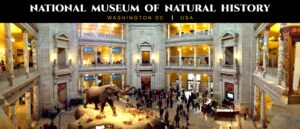
Located in the heart of Washington, D.C., in the United States, is the National Museum of Natural History. Established in 1846 and originally located in the Smithsonian Institution Building, the institution’s expanding collection necessitated the construction of a new building. This new facility welcomed the public on March 17, 1910. The museum boasts an impressive collection of over 148 million specimens, encompassing a wide range of plants, mammals, animals, insects, birds, reptiles, amphibians, marine specimens, fossils, gems, minerals, meteorites, rocks, human remains, and other cultural artifacts from ancient civilizations such as Egypt, Greece, and Rome. The museum spreads its impressive collection of natural history across an expansive area of 1.5 million square feet, making it the largest of its kind in the world. In 2023, the museum attracted an impressive 4.4 million visitors, making it the second-most-visited museum in the United States.
The museum’s collections provide a comprehensive account of the planet’s history, enabling us to gain insights into the wonders of the natural world. The different exhibits, from the Hall of Fossils depicting the reign of the dinosaurs to the Hall of Human Origins narrating captivating tales of human survival and extinction, portray the delicate balance of life with the environment, the intricate web of species that rely on it, and the powerful forces that shape and transform it. Every new discovery, from life in ancient Egypt to the origins of the ocean 4 billion years ago to the examination of the meteorites that hold the mysteries of the formation of our solar system uncovered through the passage of time, teaches us about the evolution of our planet and motivates us to work towards creating a more sustainable world.
The museum is open every day of the week and offers free admission to all visitors. The museum operates from 10:00 a.m. to 5:30 p.m., including holidays, except December 25th, when it remains closed to the public. Multiple forms of public transportation conveniently reach the museum. The museum is located near the Federal Triangle Metro station, making it easily accessible from the Blue, Orange, and Silver lines. It is just a short 5-minute walk away. The closest bus stop is located at Constitution Ave. and 12th St., just a short 2-minute walk away. For further information, please refer to the links provided below.
To visit the official website, click here.
For a virtual tour of the museum, click here.
To check the latest guidelines for visiting, click here.
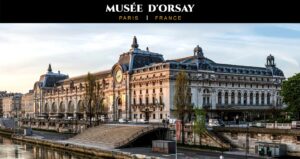
The Musée d’Orsay, originally a railway station known as Gare d’Orsay, was officially established as a museum in December 1986. It is situated next to the Seine River. Located in Paris, France, the museum showcases French art from 1848 to 1914. With a collection of 3,000 art pieces on display, this museum ranks among the largest in Europe. It is also the second-most-visited art museum in France, following the Louvre. In addition to a wide range of creative artworks such as paintings, sculptures, architecture, decorative arts, and photography, the Musée d’Orsay boasts an extensive collection of Impressionist and post-Impressionist masterpieces. This collection includes works by renowned painters such as Vincent van Gogh, Alexandre Cabanel, Honoré Daumier, Armand Guillaumin, and many others.
Some of the major highlights of the museum are Olympia and The Balcony by Edouard Manet, Romans of Decadence by Thomas Couture, The Angelus by Jean-François Millet, The Harvesters’ Pay by Léon Lhermitte, The Age of Bronze by Auguste Rodin, Portrait of Eugène Delacroix by Léon Riesener, Tepidarium by Théodore Chassériau, Whistler’s Mother by James McNeill Whistler, and The Mermaid Restaurant in Asnières by Vincent Van Gogh, among many others.
The Musée d’Orsay operates from Tuesday to Sunday, with opening hours from 9:30 a.m. to 6 p.m. The museum is closed on Mondays, as well as on May 1 and December 25. The online ticket price is €16, while the price at the museum is €14. The museum has convenient transportation options, including bus, taxi, metro, and train. The nearest stations to reach there are Solférino station via metro and Musée d’Orsay station via train. For further details, please refer to the links provided below.
To visit the official website, click here.
To book your tickets online, click here.
For more information on tickets, opening hours and visiting the museum, click here.
For a virtual tour of the museum, provided by Google Arts & Culture, click here.
![]() Top Guard Dogs For Family And Home Security
Top Guard Dogs For Family And Home Security
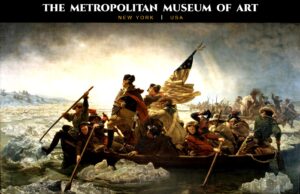
New York City, United States, is home to the renowned Metropolitan Museum of Art, also known as The Met. Established in 1870, the Met officially inaugurated its operations on February 20, 1872. The museum’s mission is to gather, study, and preserve important works of art spanning over 5,000 years and representing various periods and cultures worldwide. Through its galleries, exhibitions, and events, the museum aims to foster connections among individuals by sharing these masterpieces and inspiring creativity, knowledge, and ideas. In 2023, the museum welcomed 5.36 million visitors, making it the most-visited museum in the United States. It also holds the distinction of being the fourth-largest and fourth-most visited art museum globally. Currently, there are 17 curatorial departments that categorize the collection of 2 million art objects, with each department staffed by specialized curators and scholars.
The museum boasts an impressive permanent collection of artworks that showcase the rich diversity of cultures and time periods. This collection features a diverse range of artworks from various regions, including Greek and Roman art, the ancient Near East, ancient Egypt, Africa, Asia, Oceania, Byzantium, and the Islamic world. It covers a diverse array of creativity, including paintings, musical instruments, sculptures, decorative arts, antique weapons, armor, and other graphical works. The collection showcases artwork from various parts of the world, including Europe, America, and beyond.
The collection features notable works such as The Rocky Mountains by Albert Bierstadt, Lander’s Peak by Albert Bierstadt, Stormy Landscape by Joshua Shaw, the Snaphaunce Hunting Rifle signed by Jonas Schertiger the Younger dated 1722, the Sculpture of Mahakala Seated in Royal Ease from 12th century Tibet, the statue of Ankhpakhered of Karnak, The Horse Fair by Rosa Bonheur, Scenes from the Life of Saint John the Baptist by Francesco Granacci, The Restoration of the Catholic Religion in Strasbourg by Claude Guy Hallé, Christ Asleep during the Tempest by Eugène Delacroix, and numerous others.
The museum’s operating hours are from 10 a.m. to 5 p.m. on Sunday, Monday, Tuesday, and Thursday. The opening hours on Friday and Saturday are from 10 a.m. to 9 p.m. The museum remains closed on Wednesdays, Thanksgiving Day, December 25th, January 1st, and the first Monday in May. You can easily reach the museum by bus, cab, or subway. Adults are required to pay a ticket price of $30, while senior citizens aged 65 and older can avail a discounted rate of $22. Students with a valid ID are eligible for a reduced price of $17. Children under the age of 12 can enjoy free admission. In addition to offering complimentary tours, the museum also offers group tours. However, please note that advance registration is necessary for group tours with 10 or more adults or students. For further information regarding your visit, please refer to the links provided below.
To visit the official website, click here.
To book your tickets online, click here.
To review the guidelines before you visit, click here.
For a virtual tour of the museum, provided by Google Arts & Culture, click here.
Developing content and capturing images requires time and effort. I am extremely appreciative of the content writers, designers, photographers, and artists from Freepik, Wikipedia, Wikimedia Commons, and Unsplash whose valuable contributions and images helped me complete this article. Please note the image attributions used in the preceding content.





Leave feedback about this